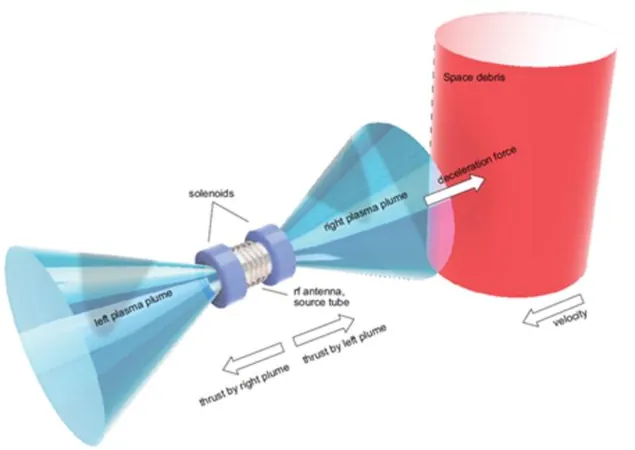
Revolutionary Plasma Thruster: A Game Changer in the Fight Against Space Junk
2025-09-10
Author: John Tan
Tackling the Space Debris Crisis
In the vast expanse of low Earth orbit, a critical danger looms: Kessler Syndrome, a scenario where the density of space debris becomes so severe that future rockets could face catastrophic collisions with remnants of defunct satellites. While we haven't hit that tipping point yet, the clock is ticking. Enter a groundbreaking solution spearheaded by Kazunori Takahashi from Tohoku University in Japan.
Innovative Techniques Against the Odds
Researchers have identified two primary strategies for safely deorbiting space debris: contact and non-contact systems. Contact methods, which involve nets and grappling hooks, risk disastrous consequences due to the unpredictable spin of debris. Instead, non-contact approaches, like lasers and ion beams, are gaining traction. Takahashi’s latest innovation examines the use of plasma beams in this context.
The Challenge of Force Balance
A major hurdle in utilizing plasma is Newton's third law: as the beam pushes against debris, it also propels the operational system backward. This effect limits the efficacy of the deceleration process. To counteract this, Takahashi and his team developed a bi-directional thruster that harmonizes the opposing forces, allowing it to maintain position while effectively slowing down space junk.
Cusp Magnetic Fields: A Powerful Solution
Originally, the bi-directional thrust fell short of effectively deorbiting larger debris. To enhance performance, Takahashi introduced a 'cusp' type magnetic field, commonly utilized in fusion reactors. This design captures and concentrates plasma, resulting in a significant 20% increase in thrust efficiency, allowing for a 17.1 mN force at standard power levels.
Closer to Reality: Testing and Future Prospects
In laboratory tests, upping the power to 5 kW yielded a remarkable 25 mN thrust—nearly achieving the 30 mN benchmark essential for deorbiting a ton of debris in just 100 days. Plus, using argon as fuel makes this approach more economically viable than traditional xenon.
A Long Road Ahead
Despite these advancements, numerous challenges remain. Current experiments have only been conducted in controlled vacuum environments, significantly different from the reality of space. The debris will continue moving while being decelerated, necessitating precise control to maintain operational distance. Furthermore, the dual-thrust system consumes more fuel, raising concerns for long-duration missions.
The Path Forward
Nevertheless, the prospect of a dual-thrust plasma engine tackling space junk is an exciting possibility. As Dr. Takahashi continues to refine this technology, we inch closer to a solution that could preserve our access to space and safeguard future ventures into the cosmos.


 Brasil (PT)
Brasil (PT)
 Canada (EN)
Canada (EN)
 Chile (ES)
Chile (ES)
 Česko (CS)
Česko (CS)
 대한민국 (KO)
대한민국 (KO)
 España (ES)
España (ES)
 France (FR)
France (FR)
 Hong Kong (EN)
Hong Kong (EN)
 Italia (IT)
Italia (IT)
 日本 (JA)
日本 (JA)
 Magyarország (HU)
Magyarország (HU)
 Norge (NO)
Norge (NO)
 Polska (PL)
Polska (PL)
 Schweiz (DE)
Schweiz (DE)
 Singapore (EN)
Singapore (EN)
 Sverige (SV)
Sverige (SV)
 Suomi (FI)
Suomi (FI)
 Türkiye (TR)
Türkiye (TR)
 الإمارات العربية المتحدة (AR)
الإمارات العربية المتحدة (AR)